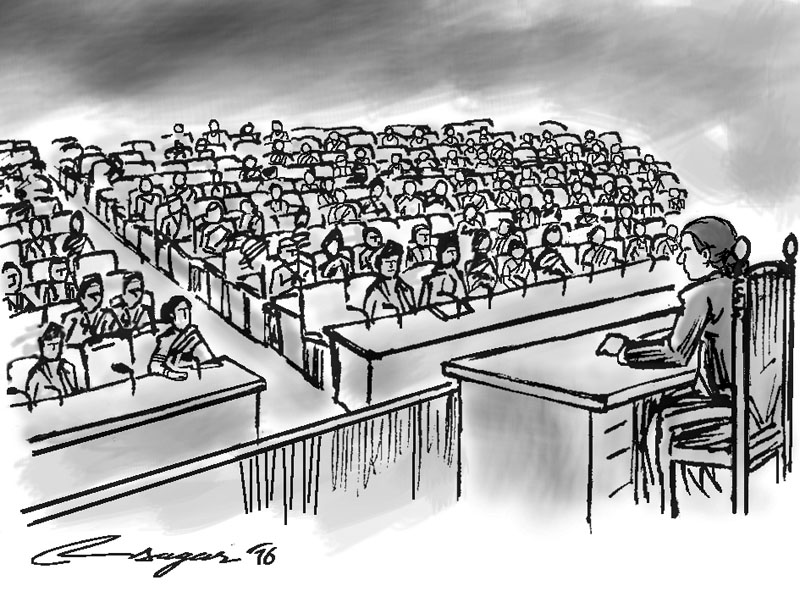Consensus in transition: Peace process
But we should not forget successful international model of truth and reconciliation like in SA where restorative justice not only focused on the victims’ needs but also addressed the offender’s contrasting more punitive approach
Paul Collier and his team revealed in a case study report of the Centre for the Study of African Economies, University of Oxford, on post-conflict risks as it is typically fragile in almost half of all civil wars due to its relapses. Nepal is no exception to this if it fails to garner consensus whatever has been achieved over a decade after the peace accord in 2006.
Peace building and institutionalizing its achievements are not easy as we think. Ho-Won Jeong writes in his book Peace Building in Post Conflict Societies: Strategy and Process stability cannot be achieved without the participation of former adversaries in a democratic political process and socio-economic reform.
Have we done so? Or we have made our positions in all political process and socio-economic restructuring including in the process to address the concerns of the victims of mega earthquake of April 25, 2015.
Nepal’s peace process is still not complete because of our rigid stance. We could promulgate a new constitution but it could not become inclusive as some Madhesi parties discarded it on the same day it was declared. The demarcation of provinces is in limbo as political parties could not agree and decide to suspend the commission’s activities for an indefinite time.
Promulgating a new constitution is one aspect but successfully implementing it in national life is another. Madhesi agitation against the new constitution and failure of the government to address their concern embroiled another vicious circle of conflict. Nepal underwent through a warlike scenario due to the blockade.
In the meantime, the Maoist Centre withdrew support to the Oli government and its chairman Pushpa Kamal Dahal has become the Prime Minister of a new coalition with the Nepali Congress and Madhes-centric parties.
The hidden factors to withdraw support are some contentious provisions in transitional justice that the Oli government wanted to impose through a new act pending in parliament although Attorney General Hari Phuyal declined it as PM Oli did not have anything to do with it.
Why has Nepali Congress backed the one-time rivals, the Maoists, to form the government under Puspa Kamal Dahal. There are distinct two hurdles; firstly, his government could not address the concern of Madhesi people. The resentment paved the way to blocking the border check points.
Instead of resolving crisis through appropriate means, his government encouraged artificial shortage of fuel, gas and other basic needs of the people. He could not control his own ministers and bureaucrats against corruption.
The praiseworthy work he did was his visualization and attempt to diversify trade dependency with India. He also concluded the agreements for railway links and other infrastructure development with China.
He crossed all the diplomatic decorum and recalled his ambassador to India who was sincerely lobbying with his counterparts to lift the blockade. He made a blunder in cancelling the president’s state visit to India at the last hour.
In the parliamentarian system, the party politics should run through consensus. But Oli government used the national budget as a tool to strengthen his party agenda through populist programs to please his vote banks for local, provincial and parliamentary elections. It also played politics to form the National Reconstruction Authority to look after post-earthquake reconstruction.
The victims are still waiting for the agreed amount to be distributed by the government to reconstruct their damaged houses. The second hurdle is if we fail to promote transitional justice mechanism to become successful, there is the chance that we may lose all the achievements so far we are capable of garnering for our nation-building.
Such backlash may be heavy for the society which is not only underdeveloped but also plagued with prolonged feudal orientation.
We should not forget that it was the need of time and as per the constitutional arrangement. In a decade long revolt, there were many cases of abuse on human rights and misuse of humanitarian law by the state and the rebel forces.
It is speculated that KP Sharma Oli and Puspa Kamal Dahal have reservations to address the war-time cases. The 9 Point Agreement and its implementation is the main cause of dissatisfaction. The complaints lodged in the Truth and Reconciliation Commission (TRC) are mainly either against the Nepali Congress, then the senior government assignment holders or the Maoists.
We cannot ignore the fact that there were no mistakes from both the rivals while fighting with each other, but there was no genocide to eliminate opponents at a larger scale (except Badarmude and Doramba). We cannot allow impunity if someone is found guilty on crimes against humanity.
But we should not forget successful international model of truth and reconciliation like in South Africa where restorative justice not only focused on the victims’ needs but also addressed the offender’s contrasting more punitive approach. Recuperative action helps heal the society tormented by violent conflict encouraging offenders to take responsibility for their actions to repair the harm by apology, compensation or community service.
So, we must encourage our system to follow the path of consensus for the success of TRC providing victims satisfaction and offenders a feel of accountability.
The author is a PhD in Conflict Management



